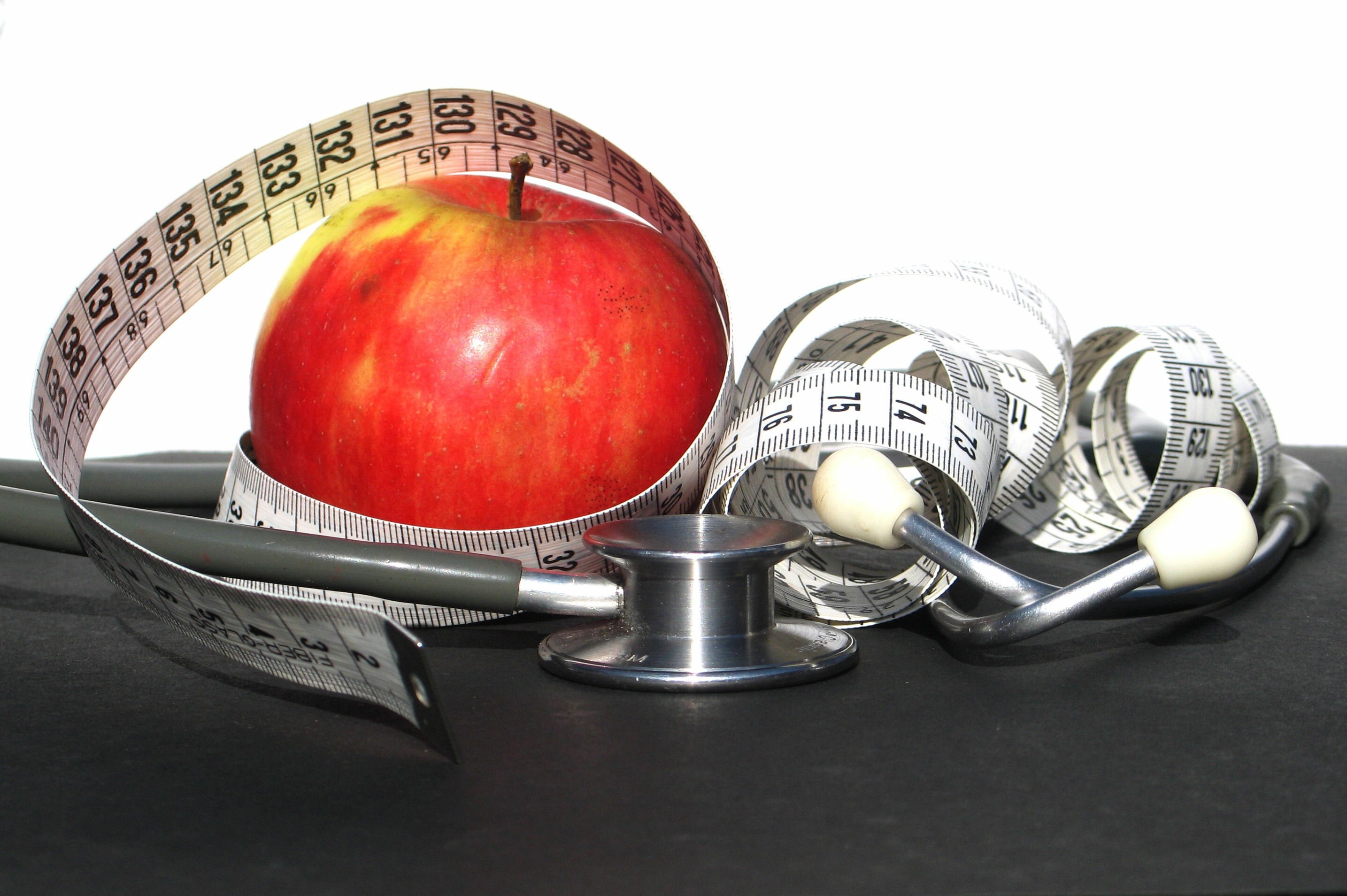“Let thy food be thy medicine and thy medicine be thy food”…. that wise comment is thousands of years old, having been spoken by the ancient Greek physician, Hippocrates, (circa 460 BC – c. 370 BC). It’s still a favoured quote!
We can, in fact, regain our health by returning to that wisdom. It may entail inner cleansing, some nutritional supplements and exercise… but in time, relying on wholesome food as the primary means to maintain a healthy body and mind is the easiest and safest way to vitality.
A balanced diet includes carbohydrates, grains, good fats and protein. Most important today is that our choices are from food sources that, on a regular basis, exclude dried packages and frozen fast-dinners as much as possible. A healthy diet includes fresh raw foods that are rich in enzymes to act as a catalyst for the many chemical reactions within our body. Enzymes do not survive either freezing nor cooking temperatures. Shopping for nutrient-rich food is at the top of the list for healthy eating and for that reason, it’s important to explore the benefits of organic choices.
In addition, people often say that switching to whole, natural food soon results in smaller meal portions that leave them feeling more satiated compared to their previous eating habits. But the first point to address is being sure you can absorb what you eat.
Probiotics: Uptake of nutrients is dependent upon the health of our intestinal tract, where the largest percentage of nutrient absorption occurs. Healthy intestinal flora is impaired by excessive sugar consumption, with our entire system adversely impacted by artificial chemicals and artificial sugars. Drinking pop on a daily basis can easily sabotage your wellness over time, for each glass contains an equivalent of roughly 10 teaspoons of sugar. This sugar overload serves to increase our craving for sweets, with worse effects from products sweetened with artificial sweeteners – according to current research. Reading the ingredient list on any packaged food informs you of artificial chemicals like nutrasweet, sorbitol or aspertame versus natural sweeteners and what preservatives or dyes it contains. Antibiotics cannot differentiate between the bad and good bacteria within our intestines so after we’ve taken antibiotics it’s important to replenish our intestinal flora with probiotics or kefir. Eating kefir or yogurt on a regular basis will ensure adequate ‘good’ intestinal bacteria for breakdown of foods. Failing that, a probiotic capsule will do similar. Without the proper flora in your gut, food cannot be broken down for absorption into the bloodstream.
Prebiotics: these sugars feed the probiotics. Identified in 1995, prebiotics are not yet as commonly mentioned as probiotics. They are available in raw foods like chicory root, Jerusalem artichoke, dandelion greens, garlic, leeks and onion, with lesser amounts in the cooked versions.
Fats: In the category of good fats, the key is moderate intake. Healthy fats contain Omega 3 in particular, with some Omega 6 and 9. These fats are perhaps best known for brain protection and anti-inflammatory effects. Fats rich in essential fatty acids include hemp products, cold water fish oils, flaxseed and chia seeds. Flaxseed oil cannot be heated without losing effectiveness and the whole natural flaxseed must be ground to enable nutrient absorption. Hemp oil is another excellent option. These fats are also important for absorption of fat-soluble vitamins A, E, D and K as well as acting as precursors for hormone production. Reducing or eliminating these healthy fats from your diet will obviously impair body function over time.
On the subject of healthy fats – ghee or clarified butter, coconut oil and olive oil are excellent for cooking or baking as they withstand higher heat temperatures before corruption. They provide health benefits and flavour. Canola oil cannot rank as a top choice today because this is one of the main genetically modified crops, as is corn and soybean oil. Olive oil with its blend of a small amount of saturated fat and larger amount of monosaturated fat, is renowned for heart and arterial health. Virgin coconut oil has not been chemically treated like refined coconut oil, and has no content of hydrogenated oil as with margarine. The main saturated fat in coconut oil is lauric acid, a medium chain fatty acid, known to increase levels of good HDL, the high-density lipoprotein in the blood – which somehow balances its effect as a saturated oil. The capric acid content in coconut oil is antifungal and antimicrobial, with antiviral and other properties still under research. Capric acid is the main component to successfully eliminating candida overgrowth when using natural methods to rebalance the body.
As with eggs, which are one of the most complete foods available, talk about a ‘high cholesterol possibility’ from using either virgin coconut oil or butter would do better to question the promotion of margarine and its hydrogenated oils. You may want to research this before accepting the on-going promotion of margarines in any form. Widespread studies of coconut-consuming populations in Polynesia show that dietary coconut oil does not lead to high cholesterol nor to high coronary heart disease. This is similar to research eventually proving Italy was a healthier heart nation, despite high consumption of olive oil, compared to western margarine-fed nations.
Nuts and Seeds: As the fruit or seed of trees, nuts and seeds are a powerhouse food. They are an excellent source of health-promoting fat, a source of protein and vitamins, and are rich in fiber. Remember that ½ cup of nuts can be equal to 450 calories but enjoy them regularly as nutritious snack food in smaller quantities or grind them to top a cereal or dessert. As a protein, nuts are more satisfying and energy-enhancing than snacking on a natural sugar in a fruit or vegetable. This makes them ideal for exams and quick energy needs for mental alertness. Due to their protein content and ability to satiate our appetite, nut snacks can help with reduction of fat intake from excess food consumption.
Chia Seeds: In the world of seeds, chia seeds are proclaimed as one of nature’s most perfect foods. Twenty-five years ago they were known as the green ‘hair’ that grew on a pottery sheep when you watered it. Today they are a nutrient superfood, containing:
- over 27 vitamins
- more magnesium than a similar broccoli serving
- more omega-3 fatty acid than a comparable serving of salmon
- provide a complete vegetable protein
- contain more iron than a similar spinach serving and are more readily absorbed
- have 5 times more calcium than milk
- contain twice the protein of any other seed or grain
- do not contain gluten
In addition to sprinkling them over your cereal, Chia seeds can be used for baking by substituting 2/3 cup of chia meal for one cup of flour. You can also make chia flour by pouring the seeds into a coffee grinder, a blender or food processor. This will last a week when stored in the fridge but is best freshly ground as needed. Chia flour can also be used as an egg substitute for vegan recipes. Mixed with water, chia seeds form a gel that can be also used as a thickener in baking or to reduce fat requirements in high-fat recipes. There is no nutritional difference between white and black chia seeds, with the main differences being attributed to where they are grown.
With chia seeds providing protein, essential fats, fiber, complex carbohydrates and antioxidants, their many benefits include:
- helping to stabilize blood sugar which results in less cravings and fewer mood swings
- an excellent essential fatty acid source for brain health, fat-soluble vitamin absorption and the many other benefits of healthy fat consumption
- as a protein, provides energy as a complex carbohydrate, fiber, and EFAs
- assisting with body hydration: chia seeds swell in water, soaking up to 10 times their weight. This results in water cravings and satiates the appetite
- high soluble fiber content assists with cholesterol levels and improves intestinal health
- high protein content provides essential amino acid needs for muscle integrity and overall metabolic function
- nutrient content includes calcium, phosphorus, magnesium, manganese, copper, iron, molybdenum, niacin, zinc and boron which helps with calcium absorption for bone health
- Chia seeds are gluten-free and make a good substitute for flour when baking for those with gluten-intolerance
Carbohydrates: Some weight-loss diets promote exclusion of this food group but in fact, all food components are vital for optimum health. While we may consume a cabbage-based soup for one to two weeks for the initial encouragement of a quick 5-pound loss, it is not healthy to continue long-term on any diet that omits any one important food component
Carbohyrdates are very important as a stored source of energy, as a stabilizing factor for some proteins like glycoproteins, as components of brain cells, to assist in breakdown of fatty acids, as components within our DNA and many other processes within our metabolism.
Simple carbohydrates break down faster for immediate energy. Fruits, natural sugars from dates, molasses, honey and maple syrup are samples of simple carbohydrates. These are natural forms the body can recognize and process.
Complex carbohydrates take longer to break down and are not stored over a long period of time. Both types are needed, with simple carbohydrates better consumed in moderate amounts.
Protein – are amino acids that are essential for health, with the ‘essential amino acids’ being the group that cannot be manufactured by our body. Our requirement for protein changes as we age. Amino acids are readily available in many foods other than meat, fish, eggs and dairy.
Plant sources include whole grains, legumes, organic soy, nuts and seeds or pulses. Archaeological evidence of legume and pulse crops as a protein source has been found in civilizations that date back 5,000 years. As the edible seeds that grow within a pod or legume source, pulses are important food crops due to their high protein and essential amino acid content. They have been found to have significant nutritional advantages, with legume consumption linked to reduced mortality from coronary heart disease according to a 1999 study done in seven countries. Pulses also have a lower glycemic index compared to other carbohydrates, making them one of the healthiest protein options for diabetics or anyone seeking weight management. They are high in fiber and protein, low in fat and moderate in calories. Is there any protein that tops these advantages?
The long list of pulses include kidney beans, pinto and navy beans, azuki beans, mung beans, scarlet runner beans, broad beans, garden peas, chickpeas and lentils, as but a sample of the many pulses recognized today. The selection makes for variety in consumption of beans either sprouted as a raw enzyme-packed topping, cooked and eaten plain with butter and lemon, used in a sauce or dalh over rice and vegetables, as a soup or mashed with chopped nuts to make a ‘meatless protein loaf’ or ‘burger’.
Spices and Herbs: Incorporating spices and herbs into your food will add much more than fine flavours. Not only are some spices an original food preservative with antiparasitic and/or antimicrobial properties, they are digestive aids that can also be brain and body tonics. Cinnamon, cardamom and nutmeg are examples of spices with powerful health benefits beyond flavoring teas, desserts and vegetables. Cayenne is another potent spice that is still used therapeutically to increase metabolism, such as influencing our venous structure and is popular for heart health and improved circulation as well as stimulating the digestive system. Herbs like the basils, oregano, tarragon, sage and rosemary were used medicinally for hundreds of years. Today they still provide an array of health benefits over and above enjoyment of sensational flavours.



